TYPES OF FOLDERS AND SUPPLIES
X-RAY JACKETS
X-ray jackets are protective folders designed to store and safeguard X-ray films in medical facilities. Constructed from durable materials, such as heavy-duty paper or lightweight cardboard, these jackets shield the X-ray films from light, dust, and damage. They typically feature clear plastic or vinyl sleeves inside that securely hold the films, ensuring their protection and preventing scratches or bending. With labeled front covers for easy identification and retrieval, X-ray jackets provide a convenient and organized solution for storing and managing X-ray films, allowing healthcare professionals to access these important diagnostic images efficiently when needed.
CATEGORY FILM INSERTS
Category film inserts are specialized sheets designed to organize and classify X-ray films or other radiographic images. These inserts typically feature pre-printed categories or labels that allow healthcare professionals to sort and store films based on specific criteria such as body regions, patient names, or dates. The inserts are designed to fit within X-ray jackets or other storage systems, providing a structured and systematic approach to organizing and retrieving radiographic images. By using category film inserts, healthcare facilities can enhance the efficiency and accuracy of film retrieval, ensuring that the right images are readily accessible for diagnosis, treatment planning, and medical record-keeping purposes.
FILM MAILERS
Film mailers are specialized envelopes or packaging designed to securely transport X-ray films or radiographic images. These mailers are typically made from sturdy materials, such as heavy-duty paper or cardboard, to provide adequate protection during transit. They feature a secure closure, such as a self-sealing adhesive strip or a peel-and-seal flap, to ensure that the films stay securely in place without the risk of accidental opening. Film mailers often have a pre-printed label area for addressing and identifying the sender and recipient information. With their protective design and secure closure, film mailers offer a safe and convenient solution for sending X-ray films to medical professionals, specialists, or other healthcare facilities for consultation, second opinions, or record-sharing purposes.
NEGATIVE PRESERVERS
Negative preservers are specialized sleeves or enclosures designed to protect and preserve photographic negatives. These preservers are typically made from archival-quality materials that are acid-free and PVC-free, ensuring that the negatives are not exposed to harmful chemicals or deterioration. They come in various sizes to accommodate different negative formats, such as 35mm, medium format, or large format. Negative preservers often have clear or translucent pockets that allow for easy viewing and identification of the negatives without the need for removing them from the sleeves. By using negative preservers, photographers, archivists, or collectors can safeguard their negatives from scratches, dust, moisture, and other potential damages, extending their lifespan and preserving their quality for future use or archival purposes.
DENTAL
Dental folders are specialized file folders designed specifically for organizing and storing dental records and related documents within dental practices. These folders are essential for maintaining accurate patient information, treatment plans, X-rays, lab reports, and other dental records in a structured and organized manner. Dental folders often feature pre-printed labels or sections for recording patient details, such as name, contact information, and appointment history. They may also include designated pockets or compartments for holding specific dental documents or materials. With their dedicated design, dental folders streamline record-keeping processes, improve workflow efficiency, and ensure easy access to important patient information, contributing to enhanced patient care and effective dental practice management.
VETERINARY
Veterinary folders are specialized file folders designed to manage and organize veterinary records and documents within veterinary clinics, animal hospitals, or other veterinary practices. These folders are specifically tailored to the unique needs of veterinary professionals and provide a systematic way to store and access important patient information, vaccination records, treatment plans, diagnostic reports, and other veterinary-related documents. Veterinary folders often feature sections or pockets designed for specific purposes, such as holding X-rays, lab results, client information, or pet history. They may also include pre-printed labels or color-coded systems to facilitate easy identification and categorization of records. By utilizing veterinary folders, veterinary professionals can ensure accurate record-keeping, streamlined workflows, and improved patient care by having quick access to essential information when needed.
OPTOMETRY
Optometry folders are specialized file folders designed specifically for organizing and managing patient records and related documents within optometry practices. These folders are essential for maintaining accurate vision exam records, prescription details, contact lens specifications, and other optometry-related information. Optometry folders often feature dedicated sections or pockets for holding patient records, vision test results, diagnostic reports, and other relevant documents. They may also include pre-printed labels or sections for recording patient details, such as name, date of birth, and appointment history. With their tailored design, optometry folders enable optometrists to keep patient information organized, easily accessible, and secure, ensuring efficient patient care, treatment planning, and seamless practice management.
ACCESSORIES & FORMS
Medical and radiology accessories encompass a wide range of specialized tools and supplies used in medical and radiological settings to enhance patient care, diagnosis, and treatment. These accessories can include items such as patient identification wristbands, imaging markers, lead aprons, positioning aids, and protective eyewear. Patient identification wristbands help ensure accurate patient identification and matching of records, improving safety and preventing errors. Imaging markers aid in precisely marking anatomical landmarks or important areas on X-rays or radiographic images. Lead aprons are used for radiation protection during diagnostic imaging procedures. Positioning aids assist in achieving optimal patient positioning for imaging or treatment. Protective eyewear shields healthcare professionals from potential eye hazards during radiological procedures. These medical and radiology accessories contribute to the safe, accurate, and efficient delivery of healthcare services, promoting patient safety and positive patient outcomes.

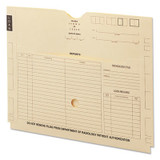 X-Ray Jacket
X-Ray Jacket
 Category Film Inserts
Category Film Inserts
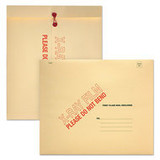 Film Mailers
Film Mailers
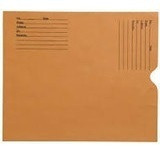 Negative Preservers
Negative Preservers
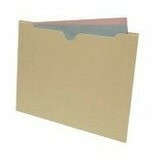 Dental
Dental
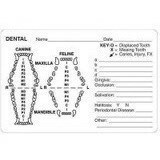 Veterinary
Veterinary
 Optometry
Optometry
 Accessories & Forms
Accessories & Forms
